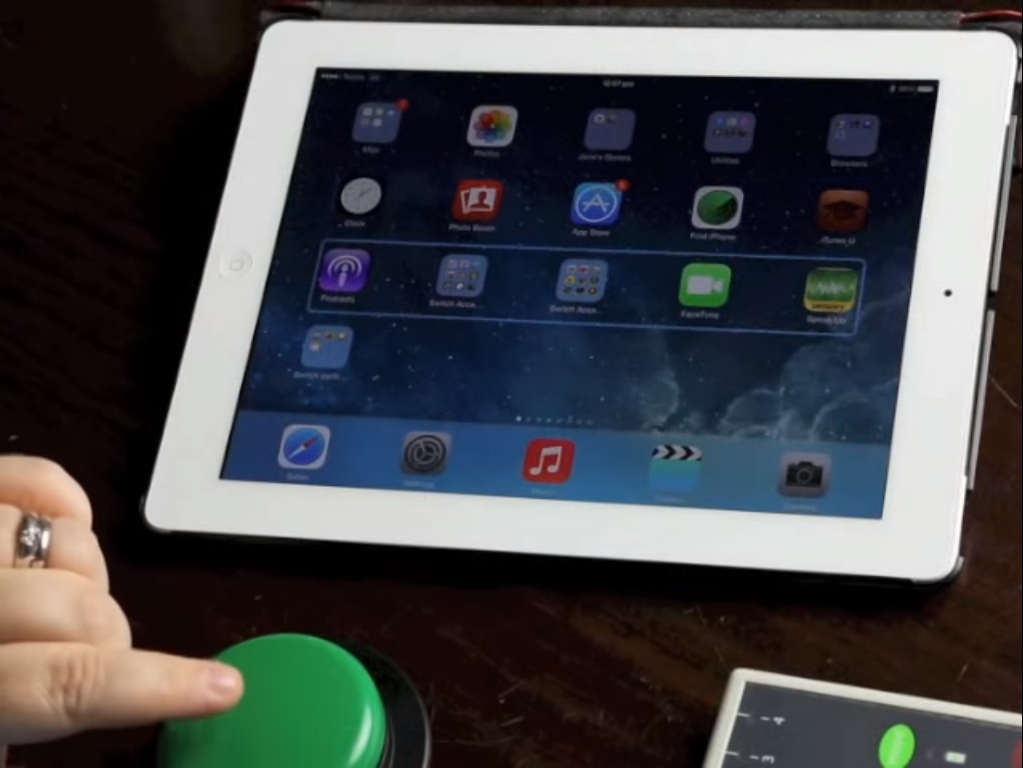Switch access
Switch accessibility means support for Stephen Hawking type technology; using a single input, such as an infra-red blink detector or a headrest mounted single button, to operate the entire operating system.
There are a wide range of input devices, from wheelchair headrest buttons to infra-red blink detectors, but they all work in the same way – sending a simple on/off signal, acting as a single button/keypress. The input sometimes registers as an existing controller button, sometimes external Bluetooth devices.
It works through scanning through interfaces, which is essentially focus management. Moving focus around either automatically on a configurable timer (pause for a few seconds on each item, make an input when the one you want is highlighted), or using a second input to cycle manually through the interface elements (both options should be offered). This is built into the operating system of iOS, Android and Macs, and easily achievable through third party software on Windows.
As keyboard/controller focus management is in place, this should be relatively straightforward. It only benefits small numbers, but for those people there is hugely empowering life changing benefit.
There are some configuration options that need to be considered, such as the length of the pause on each item, but this basic level should be easy to achieve. For a more advanced implementation, nesting would be useful, for example navigating a row at a time first, and then navigating within that row. An iOS style point mode would also be useful, crosshairs moving left to right then up and down the screen, allowing selection of elements in games/apps that don’t have exposed native UI.

iOS being controlled solely with a single external accessibility switch
